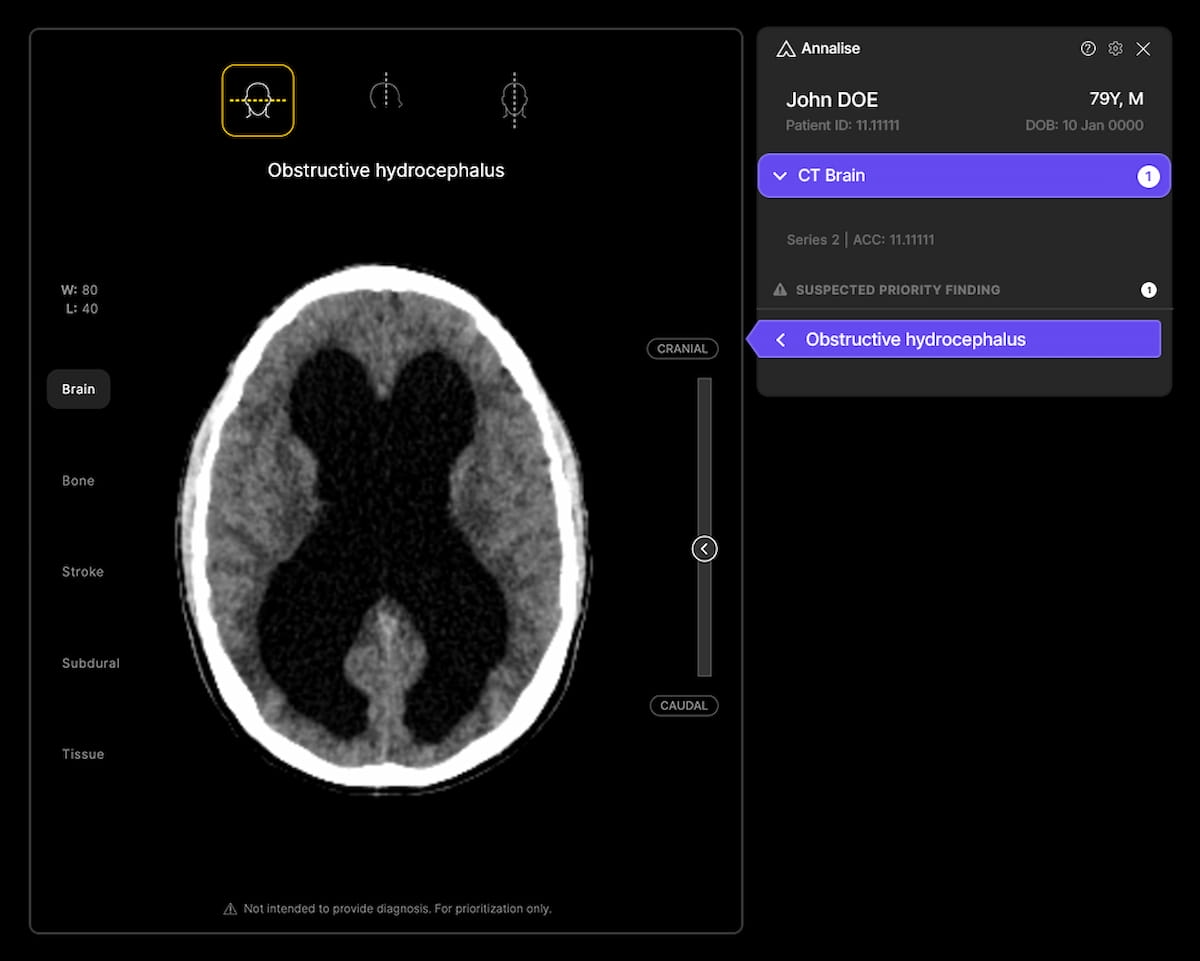CMS Approves NTAP Reimbursement for CT-Based AI Triage Software for Obstructive Hydrocephalus
The first radiology triage modality to garner a Breakthrough Device Designation from the FDA, Annalise-Obstructive Hydrocephalus has reported sensitivity and specificity rates of 97.5 percent and 95.3 percent respectively.
The Centers for Medicare and Medicaid Services (CMS) will provide a new technology add-on payment (NTAP) in 2025 for the use of the artificial intelligence (AI) software Annalise-Obstructive Hydrocephalus (OH), which facilitates triage of suspected OH cases based on an analysis of brain computed tomography (CT) cans.
While the clinical presentation of OH has similar characteristics to other neurological conditions, the potentially life-threatening OH requires urgent detection and treatment. Annalise-Obstructive Hydrocephalus identifies suspicious findings of OH within minutes of assessing non-contrast brain CT scans, according to Annalise.ai, the manufacturer of the AI software.
In 2025, the Centers for Medicare and Medicaid Services (CMS) will issue a new technology add-on payment for use of the AI software Annalise-Obstructive Hydrocephalus, which reportedly has a 98.7 percent AUC for detecting obstructive hydrocephalus on non-contrast brain CT scans. (Image courtesy of Annalise.ai )

The company emphasized that Annalise-Obstructive Hydrocephalus, which garnered the FDA’s Breakthrough Device Designation in 2023, has an area under the curve (AUC) of 98.7 percent, a sensitivity rate of 97.5 percent and a specificity rate of 95.3 percent for OH detection.
“Patients with obstructive hydrocephalus can deteriorate rapidly if not promptly identified, evaluated, and treated. Annalise-OH will help care teams identify these patients faster, consult with their neurosurgeon, and reduce the chance that they suffer from severe complications,” noted Aaron Yengo-Kahn, M.D., a neurosurgeon based in Orange, Calif.”
Newsletter
Stay at the forefront of radiology with the Diagnostic Imaging newsletter, delivering the latest news, clinical insights, and imaging advancements for today’s radiologists.
Stroke MRI Study Assesses Impact of Motion Artifacts Upon AI and Radiologist Lesion Detection
July 16th 2025Noting a 7.4 percent incidence of motion artifacts on brain MRI scans for suspected stroke patients, the authors of a new study found that motion artifacts can reduce radiologist and AI accuracy for detecting hemorrhagic lesions.